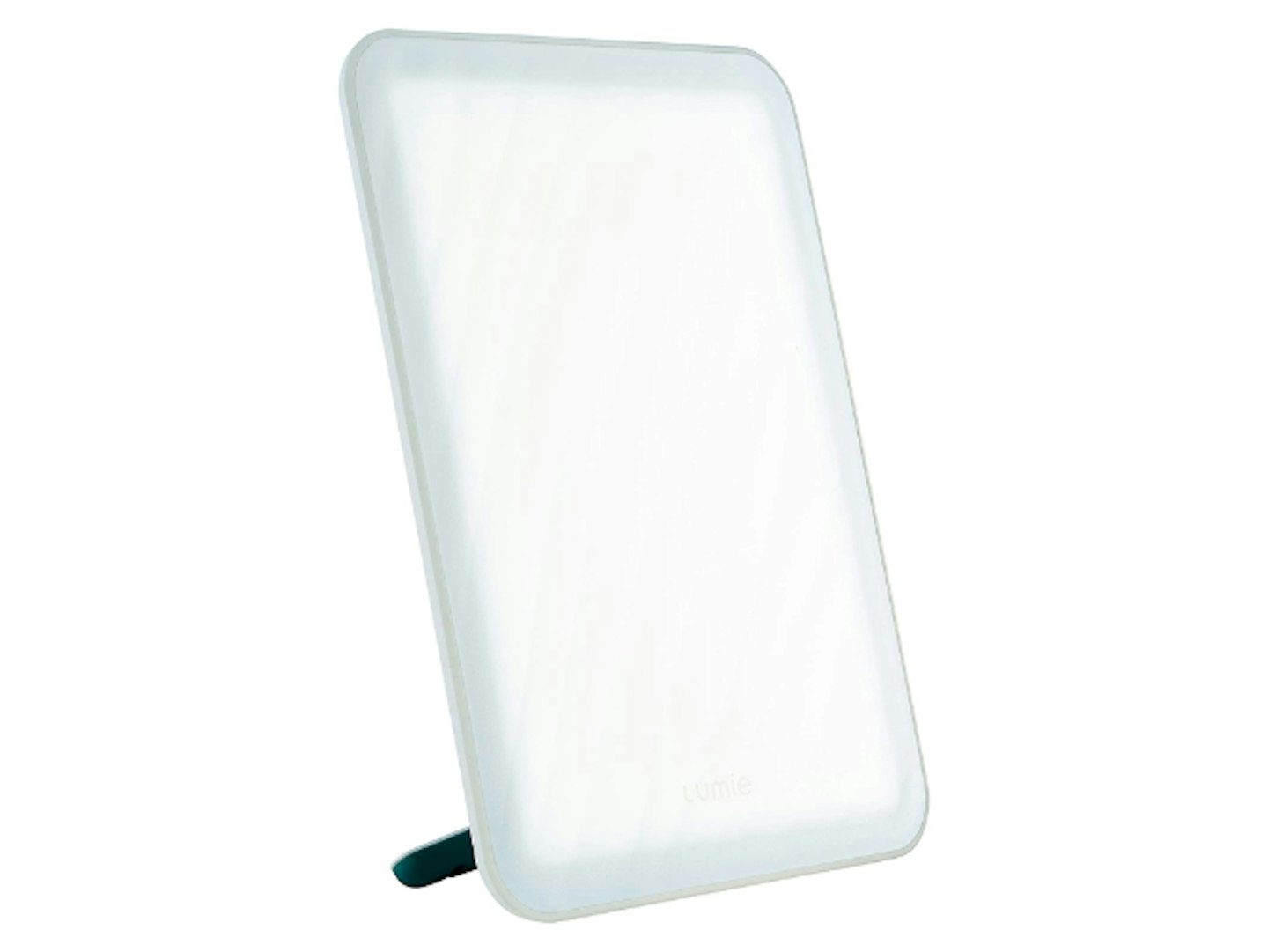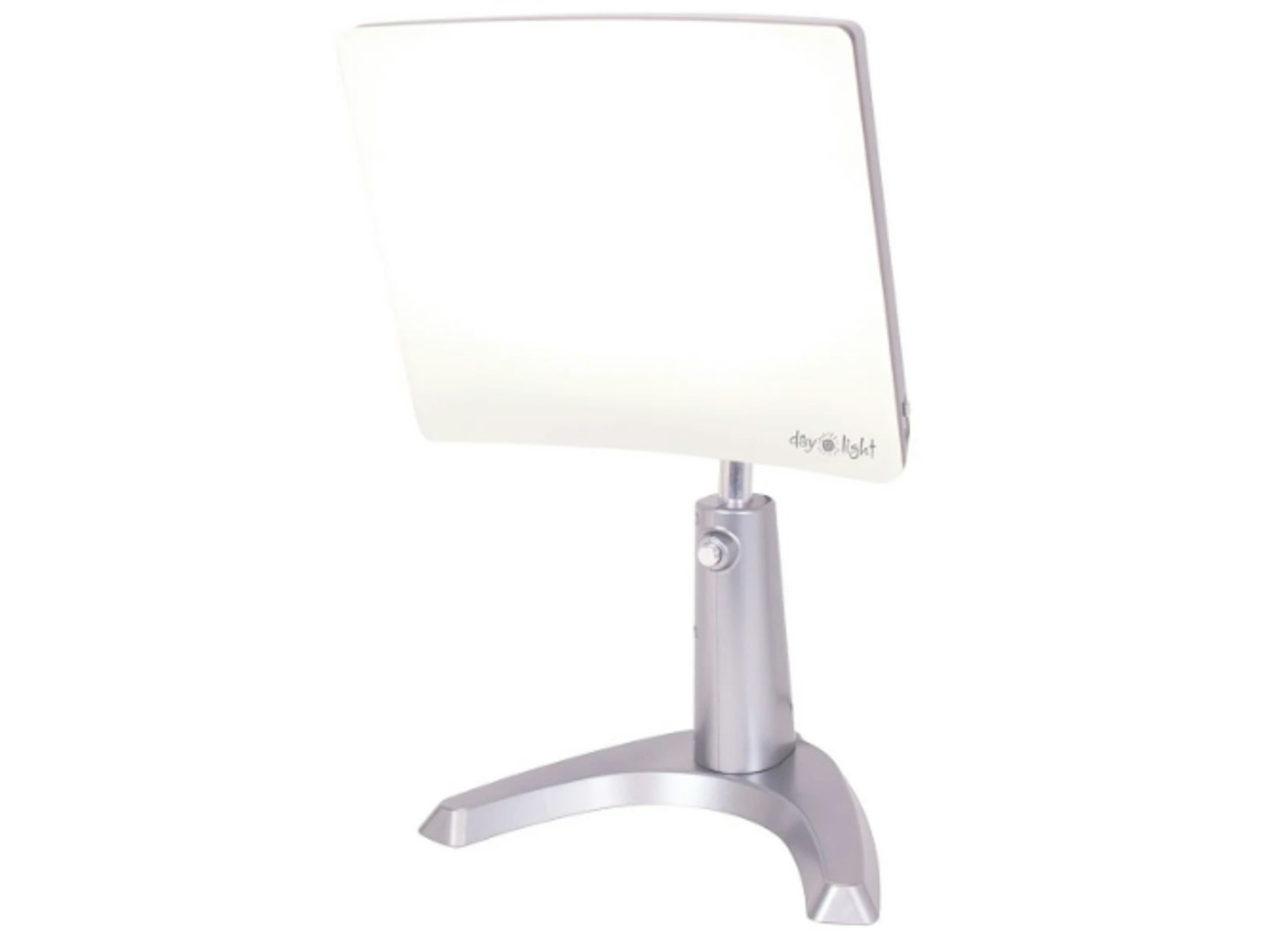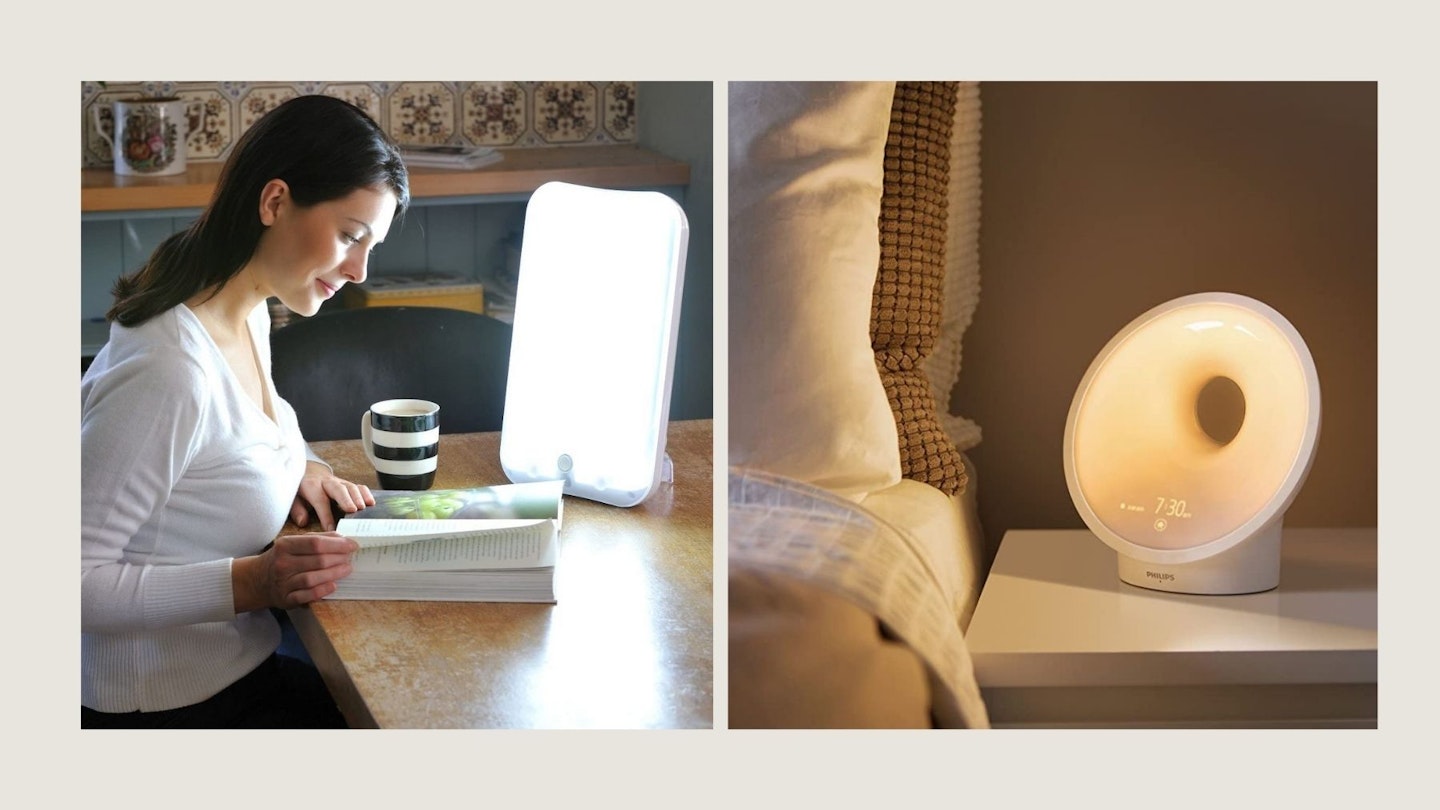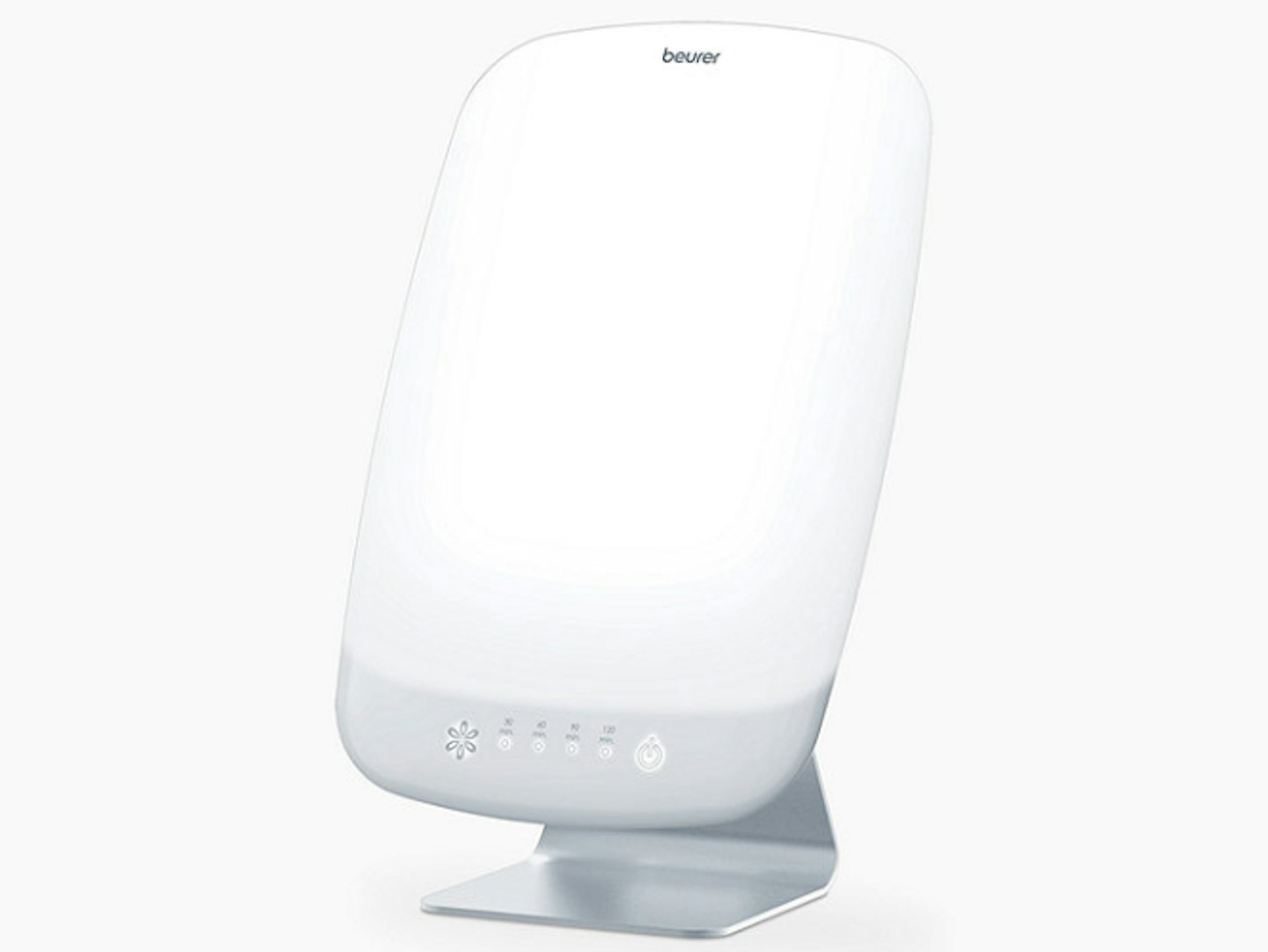If you suffer from Seasonal Affective Disorder, one of the most straightforward steps to feel better is picking up one of the best SAD lamps. SAD lamps can be used in short sessions to help combat the effects of low light or even more regularly as a replacement for a desk lamp. Below, we explore SAD a little more and look at the available sunlight lamps and sunrise alarm clocks.
According to the Royal College of Psychiatrists){href='https://www.rcpsych.ac.uk/mental-health/mental-illnesses-and-mental-health-problems/seasonal-affective-disorder-(sad)' target='_blank' rel='noreferrer noopener' class='add-referrer-link'}, about three people in every 100 in Britain suffer from Seasonal Affective Disorder (SAD), with more people reporting milder symptoms. SAD, known colloquially by many as the 'winter blues', shares many symptoms with depression, such as weariness, reduced sex drive, irritability and troubled sleep.
The best SAD lamps at a glance:
• Best SAD lamp overall: Lumie Vitamin L - View on Amazon
• Best SAD desk lamp: Lumie Desklamp - View on Amazon
• Best SAD lamp for timed sessions: Beurer TL95 - View on John Lewis
• Best SAD wake-up light: Philips SmartSleep Wake-up Light - View on Amazon
SAD is due, in part, to the reduced daylight hours and general low light of the winter season. This low light means our brains produce too little of the feel-good hormone serotonin and too much sleep-triggering hormone melatonin.
While those struggling with SAD and the associated symptoms can engage in physical activity and spend as much time as possible outside during daylight hours, with most people working indoors, many will find this very difficult. This is where SAD lamps and sunrise alarm clocks can help.
The best SAD lamp overall

redirect.viglink.com
Lumie Vitamin L is a clinically proven SAD lamp that is designed to help improve the symptoms of seasonal affective disorder (SAD). It is a UV-free, full-spectrum lamp that emits 10,000 lux of light, which is the recommended level for SAD therapy.
As a full-spectrum lamp, its light is similar to natural sunlight. The Lumie Vitamin L is a safe and effective way to treat SAD. It is recommended to use the lamp for 20-30 minutes each day, within 30 minutes of waking up.
Pros
- Best for most setups
- Medically certified
- Well-trusted brand
Cons
- Not an inspiring design
| Lux | 10,000 |
| Medically approved? | Yes |
| Different lux modes? | No |
| Flicker-free? | Yes |
- "I use the Lumie Vitamin L all year round, as my office doesn’t have direct sunlight. I find it a real salve in daily life, not only lifting my mood but as a means to provide a natural, diffused light around my office, reducing the sense of brightness that I get from my monitors. In the winter, I particularly value its power to help me through symptoms of SAD.
"I have had several Lumie products, but this is the best. It’s flat and discrete, too, so it fits nicely at the back of my desk facing the wall - this helps to brighten the whole room and means I can have it on all day without getting eye strain." Tried and tested by William Lobley, Deputy Tech and Fitness Editor
The best SAD wake-up light

The Philips SmartSleep Wake-up Light is a revolutionary departure from conventional alarm clocks, offering a novel and gentler approach to waking up. Instead of abrupt, jarring noises, this innovative alarm clock simulates a sunrise, gradually intensifying the light over 30 minutes. This replication of natural dawn triggers your body's inherent wake-up mechanisms, making early mornings more manageable.
Beyond its sunrise simulation, the SmartSleep Wake-up Light boasts various features that can elevate your sleep and wake-up experience. Its sunset simulation function, for instance, softly dims the light 30 minutes before bedtime, promoting relaxation and preparing you for sleep. Additionally, it offers a variety of calming natural wake-up sounds, such as birdsong and ocean waves, ensuring a more refreshed morning awakening.
For those who prefer auditory cues, the device includes an FM radio, allowing you to awaken to your favourite music or news station. The user-friendly tap snooze feature permits a nine-minute alarm extension with a simple tap on the device's top. Furthermore, the SmartSleep Wake-up Light doubles as a versatile bedside lamp, with adjustable brightness settings tailored to your preferences.
Pros
- Clinically proven
- Custom wake-up combinations of light, sound and radio
- Soothing colour quality
Cons
- Pricey if you just want an alarm clock
- Buttons take some getting used to
| Lux | 300 |
| Medically approved? | Yes |
| Different lux modes? | Yes, dimmable |
| Flicker free? | Yes |
- "I don't typically leave reviews, but I felt I needed to for this product as it's been really helpful in the last month we've had it. Getting out of bed in the winter is always a bit of a struggle when your bed is comfortable and the room is dark, but this has helped us considerably feel more awake and made it easier to get out of bed at a reasonable time.
"The thing I like about this light overall is how gradually it starts with the light. I've purchased cheaper lights in the past and had to return them as they turn on the light to suddenly and it jolts you awake. This is the first one I've found that the light is super gradual and makes the wakeup process more natural."
The best compact SAD lamp
If you are looking for a SAD lamp that doesn’t take up much space, consider the Beurer TL50. A medically certified light, the TL50 delivers 10,000 lux from a 15cm distance, ideal for 20 to 30-minute sessions or having a place on a sideboard or desk to add some natural feeling of light into the room. Like all quality SAD lamps, the TL50 is flicker-free and has a pleasant, even light distribution across its panel.
Pros
- Compact size
- 10,000 lux
Cons
- Circle design not for everyone
| Lux | 10,000 |
| Medically approved? | Yes |
| Differnt lux modes? | No |
| Flicker free? | Yes |
- "I chose this design as it is circular as a representation of the sun, I start suffering with SAD at the end of October, one of my symptoms is feeling tired in the morning and afternoon. Turning this on during these periods kept me awake and helped.
"I have used this whenever I feel the depths of dreariness on me due to weather, the light itself is an even brightness all over... it feels sturdy on its stand, it is slightly tilted upwards. I left mine on for up to an hour and it didn't get overheated or hot. I recommend this and will be buying another one later this year."
The best SAD lamp for timed sessions
For those seeking timed daily sessions of light therapy, the Beurer TL95 offers many attractive features that add welcome flexibility. First, the maximum lux from around 20 cm is 14,000 - the highest on our list. However, the TL95 can also be set at another five levels of brightness, from as low as 2,500 lux.
Second, the lamp has a timer which can be set between 30 and 120 minutes with an automatic switch-off, which can ensure you’re getting your correct light exposure time in and help you save energy. Third, the panel pivots on an axis, allowing you to get it into a position that works well for you.
Pros
- Choose the level of brightness, from 2,500 to 14,000 lux
- Timed sessions available, from 30 to 120 minutes
- Medically certified
Cons
- Considerably more expensive than Lumie devices
- Not all the will appeal to those wanting a SAD light for all-day use
| Lux | 14,000 |
| Medically approved? | Yes |
| Different lux modes? | Yes |
| Flicker free? | Yes |
- "During my night duty periods, I really miss the light. That's why I bought this lamp and didn't regret it. The amount of light that the part emits is enormous. I like the large area and the fact that the light is diffuse. I find the item well made and I like the design. The base is heavy enough and the shade can be tilted so that the lamp illuminates you directly. In the back part of the base, there is a recess where you can securely grip and carry the lamp.
"The only minor criticism I have is that setting the brightness requires little patience, as you have to wait 1-2 seconds each time before you can set the next brightness level. But I can really live with that. I like the fact that, in my opinion, this lamp has omitted superfluous features such as birdsong or color play. The timer is completely enough for me."
The best premium SAD lamp

ninelife.uk
The Carex Day-Light Classic Plus is a premium option for SAD therapy. It provides 10,000 lux from a 30cm distance from its large panel, which measures 33 x 40 cm and is poseable - an uncommon feature with these products. Its large stand means that, unlike other options on this list, it can be aimed at the face or angled slightly to give the impression of the light coming from above.
The Carex Day-Light Classic Plus is a popular choice in the US, with only a select few retailers offering it to UK clients. While the readily available European brands like Lumie or Beurer offer a more affordable access to medically approved light therapy, the Carex has its size. If you’re after a more window-like experience, the huge panel of the Day-Light Classic is a great choice.
Pros
- Large panel with even light
- Poseable head for convenience
Cons
- Much more expensive than other medically certified SAD light
| Lux | 10,000 |
| Medically approved? | Yes |
| Different lux modes? | No |
| Flicker free? | Yes |
- "This product was recommended to me by a nurse practitioner. And it changed my world through the winter. I had way more energy through the day and felt a lot happier through the winter."
What to look for in a SAD lamp
Full-spectrum - Choose a SAD lamp with full-spectrum light to mimic natural sunlight, aiding in mood improvement.
10,000 lux minimum - Ensure the lamp emits at least 10,000 lux of brightness for effective light therapy. This is not the case for light therapy alarm clocks - they require a much lower lux level to help sleeping and waking (around 300 lux).
Flicker-free - Opt for a lamp with flicker-free technology to prevent eye strain and discomfort during use.
Diffuser - Look for a lamp with a built-in diffuser to soften and evenly distribute the light for gentle therapy.
Size - Consider the lamp's size, as it should fit comfortably in your therapy space and meet your needs.
Poseable (optional) - Some lamps offer poseable or adjustable features, allowing you to direct the light where you need it most, which can be a beneficial option.

What is seasonal affective disorder (SAD)?
According to Mind, a leading UK mental health charity, seasonal affective disorder (SAD) is characterised by sadness, loss of interest in activities, changes in sleep and appetite, and other symptoms of depression. Signs of SAD also include difficulty concentrating, a lowered immune system and feelings of agitation.
SAD is most common during winter, when there is less daylight. However, some people experience SAD during the spring or summer months. For further information and support with SAD or any other mental health conditions, head to the Mind site.
Do SAD lamps work?
We measure sunlight in lux; in the summertime, sunlight intensity can reach 60,000 lux and beyond. However, this number will often sink as low as 2000 lux in winter. Indoors, it’s even lower – depending on room layout and building design, some office’s lux count will sink to 500. This low lux count can lead to irritability, lethargy, restlessness and high-carb food cravings.
A genuine, medically certified SAD lamp can give the user 10,000 lux of sunlight simulation. As little as one hour per day spent with one of these lights can seriously reduce the adverse effects of winter and boost your mood and sense of wellness.
Please note: There are many SAD lamp imitations available on the market. Just because a product is advertised as a SAD or “Full Spectrum” lamp doesn’t mean it’s a certified medical device. Quite often, these imitations are very bright lights. We’d recommend buying from a reputable manufacturer, plus reading the reviews from real people and their experiences.
Trustworthy SAD lamp brands:
• Lumie
• Philips
• Carex
• Verilux
• Northern Light Technologies
About sunlight alarm clocks
We can all agree that one of the hardest things about winter is waking up to a night-dark morning, and this darkness can have those who suffer from SAD symptoms starting the day on a negative note.
A sunrise alarm clock will combat the darkened morning by slowly introducing a soft light into your bedroom over a user-set duration before an alarm goes off. This gradual transition helps your body wake naturally, as it would during a sunrise rather than with a sudden jolt.
Those who use these sunrise clocks report vast improvements in their morning moods. Even those who don’t feel they suffer from SAD symptoms may find that the gentler transition from sleeping to waking is a much pleasanter way of beginning the day. This gentle awakening may help reduce morning bad moods and help you step into the day with greater positivity and a general feeling of wellness.
These lights also come with sunset features, slowly reducing light to induce a restful state in the evenings. Optional ambient natural noises, like bird songs or white noise, can accompany sunrise/sunset features. If you’re looking for high-quality sounds, you’ll want to spend a little more on a model such as the Philips Wake-Up, as the quality speaker means the sound is much more organic and pleasant. Less expensive models tend to focus more on the light, sacrificing the speaker size, power and quality.
For further information and support with SAD or any other mental health conditions, head to the Mind site. You can also talk to your doctor if you're struggling or feeling overwhelmed, or contact Samaritans anytime, day or night on 116 123 to speak to someone for support.
William Lobley is a Deputy Editor and reviewer for What's The Best, specialising in technology, gaming, and outdoors. He also writes for Empire Online.
Subscribe to the What’s The Best Newsletter to keep up to date with more of the latest reviews and recommendations from the rest of the What’s The Best team.


